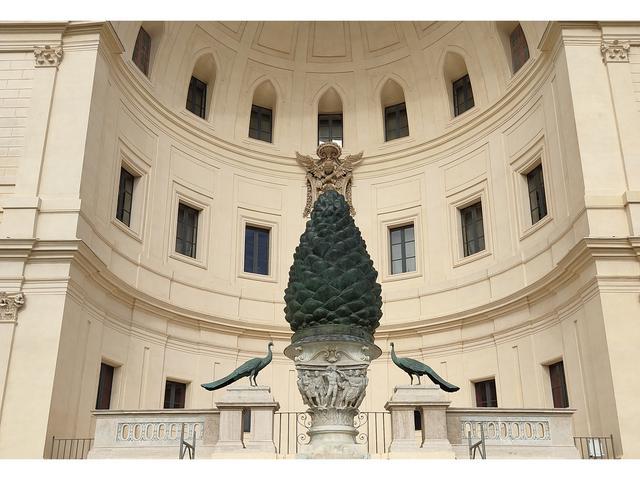Pineapple Courtyard

The Pineapple Courtyard, also known as the Patio de la Piña, is a stunning architectural masterpiece located within the Vatican City. Designed by the renowned architect Donato Bramante in 1506, this courtyard was commissioned by Pope Julius II with the intention of connecting the palace of Innocent VIII to the Sistine Chapel. The highlight of this courtyard is the enormous bronze pineapple sculpture that stands at about 4 meters high, making it the largest pineapple cone figure ever found in the world.
The history behind the Pineapple Courtyard is as intriguing as its design. The bronze pineapple was discovered during medieval excavations in the remains of a chamber of the Baths of Agrippa, located north of the Largo di Torre Argentina. It is believed to have originally belonged to the nearby but now disappeared temple of the Sanctuary of Isis. This connection to ancient Egyptian traditions adds a layer of mystery to the symbolism of the pineapple within the Vatican walls.
Many theories surround the significance of the pineapple as a symbol within the Vatican. In esoteric beliefs, the pineapple is often associated with the pineal gland, also known as the Mind's Eye. This symbolizes the process of self-discovery and deepening one's understanding of oneself. The concept of the "awakening of the third eye" is prevalent in various cultures, including Egyptian, Sumerian, Assyrian, and Hindu, making the Pineapple Courtyard a nod to ancient wisdom and spiritual enlightenment.
Visitors to the Vatican are captivated by the Pineapple Courtyard not only for its historical and architectural significance but also for its enigmatic symbolism. As one of the lesser-known gems within the Vatican City, the courtyard offers a unique glimpse into the intersection of art, history, and spirituality. Whether you are a history buff, an art enthusiast, or a spiritual seeker, the Pineapple Courtyard is sure to leave a lasting impression on all who have the privilege of experiencing its beauty and mystery.
© ChatGPT 3.5
The two peacocks that flank the pineapple are identical to those found in the New Arm museum, in the Vatican Museums. The originals are made of bronze and were brought from Hadrian's Villa. This animal was the symbol of fertility in ancient Egypt and later, it was the symbol adopted by the Romans to attract good luck.
These peacocks stand out for their realism, expression and the refined representation of their plumage. These characteristics and their valuable symbolism of immortality reinforce the hypothesis that they originally belonged to the decoration of Hadrian's tomb.
This patio was intended mainly for the rest or meditation of the popes.
Used and represented in various ancient pagan cultures such as Egyptian, Sumarian, Assyrian and Hindu, the pineapple is the symbolism of the awakening of the third eye.